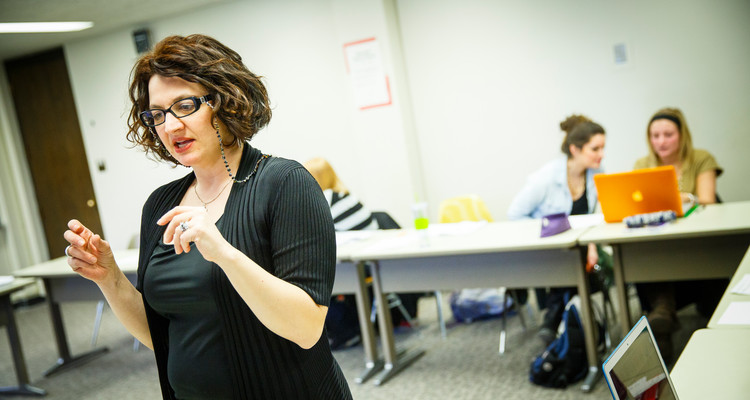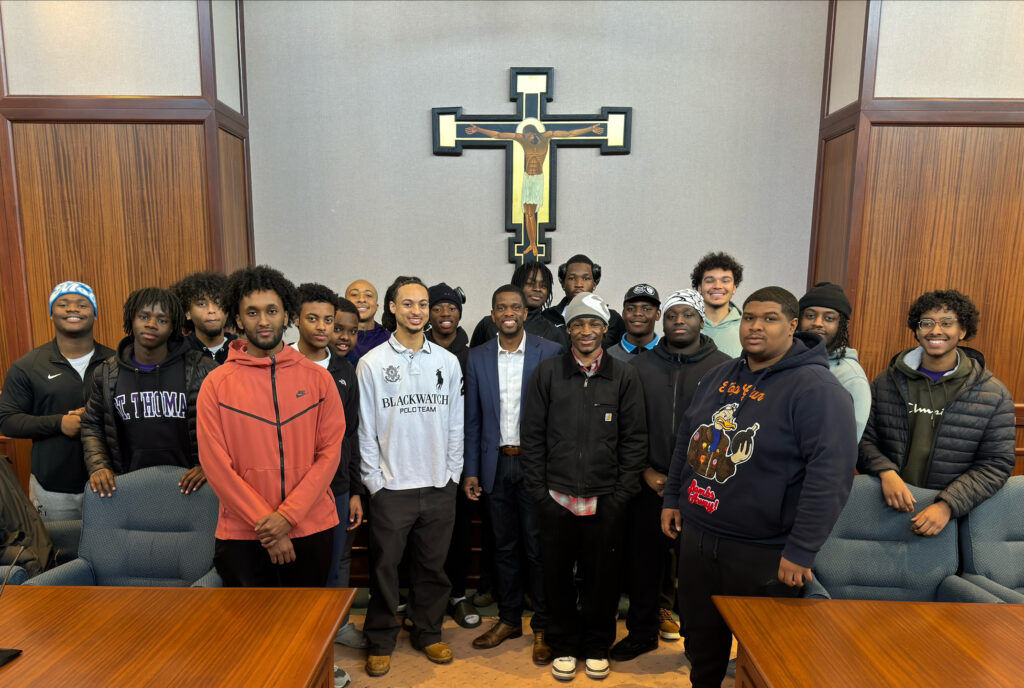As a first-generation American growing up in a Chicago working class, predominantly immigrant neighborhood in the 1970s and 1980s, I remember being mesmerized by the television show The Brady Bunch. I was infatuated by their perfect button noses, their accent-less dialogue and that picture-perfect ranch house in the middle of a green suburban block. Unconsciously, I was drawn to the sharp social differences between the television family and my own. As I grew, I became evermore conscious of the racial, class and other social differences around me. I was endlessly curious about how and why they existed. It was only after turning to graduate work in mediated representations of social identities that I realized that what I was initially drawn to was the powerful norm of quintessential American-ness: a white, seemingly “non-ethnic,” heterosexual couple and middle class family.
What it means to be an acceptable, visually recognizable and “true” American in our culture is circumscribed in varying oppressive ways by the intersection of race, class, gender and other social axes of difference. This reality belies the powerful grip of mainstream rhetoric that promotes the ideology that all of us, regardless of social status, are equal. Because of this powerful ideology, it took me a while to realize that my observations about a very specific race- and class-based notion of national belonging were legitimate. My college education did not even address these issues. Attending an urban commuter campus with other working class, first-generation college students, I rarely encountered courses that raised class, race and gender issues.This sidestepping of issues of race, class, gender and national identity in college courses as well as the pressure to get a practical job that pays the bills resulted in little formal pursuit of my intellectual curiosities early on.
And yet, after college, I could not put aside these incessantly compelling observations. Working in an office downtown, I had the ever-present thought: why are all the executives white, mostly male, and the administrative staff predominantly African-American? I found it remarkable that this was at once so glaringly obvious and yet remarked upon so little. On a broader scale, it was the 1990s and racial crises were coming to a head. The Chicago Bulls’ Michael Jordan was the most famous person on the planet while Los Angeles erupted in protests after the acquittal of police officers accused of beating of a black man as caught on video. And, we cannot forget, the case of O.J. Simpson.
How could one not want to study issues of race, class and national identity amidst all this? I sure did. But what did I know about intellectual jobs that allowed one to study and talk about these issues? With my background, not much. So, I did what anyone who is not well connected and ignorant might do. I went to the bookstore and looked up jobs as a “researcher.” I now laugh at how naive this approach was. Through this tactic I identified doctoral study and the job of college professor as my avenues for fulfilling this interest. Thank you U.S. Department of Labor and its Occupational Outlook Handbook.
At thirty, I finally encountered theoretical explanations for why social differences matter through graduate study of mass communication at the University of Iowa. I grew intellectually as I learned about how social power does not operate separately from identity categories like race, class and gender but rather is reproduced through them. I learned how mediated discourses and images powerfully shape acceptable and unacceptable (or Other) identities that re-inscribe unjust social hierarchies. By the end of my training, I realized that the long journey for answers was not a coincidence. When read in the larger social context, the dominant culture ensures that questions about the intersecting relationships between race, class and nation remain on the margins.
Because of this realization, I became committed to research projects and teaching that bring to light the often unspoken ways we are taught to marginalize groups along the lines of class, race, gender and other intersecting identity categories. Mediated discourses – or ways of talking about groups or topics – contain taken-for-granted ideological assumptions that are easily missed in our everyday media consumption. My role, following the cultural studies academic tradition, is to serve as a scholarly critic who intervenes in discourses about marginalized groups by identifying how these discourses often function subtly and rhetorically to maintain the status quo. I then reframe these representations in more empowering ways. My hope is that such reframing produces alternative possibilities for individual and collective thinking and action that benefits the many and not simply the privileged of our society.
For example, one study published in Critical Discourse Studies concerns the paradoxical relationship of national identity and immigration. With the latest wave of increased immigration in the late 20th and 21st century, there has been a resurgence of xenophobic and nativist discourses, many targeting Latino/a immigrants in particular. These fear-based discourses charge today’s immigrants with threatening to change the centuries-old nature of American national identity. At the same time, however, there is a glorified myth of the nation as a land of ongoing opportunity for downtrodden immigrants. To reconcile these contradictory ideas about immigration, mainstream media often represent past generations of immigrants as “good” immigrants who, supposedly, assimilated quickly and worked hard to build the nation. Long ago generations of immigrants are often juxtaposed in the media with recent immigrants who purportedly are unwilling or unable to do the same. To counter these myths, my research study examined early twentieth-century German-American immigrant struggles to belong, at a time of intense xenophobia and bans on the German language. This study showcased the pressure for 100% Americanism that hastened German-Americans’ assimilation, not unlike the immigration rhetoric heard today. Thus, this study intervenes in contemporary discourses about immigration showing how national identity is an ongoing social invention defined through Others, not as the exception, but as the normative practice in national identity construction.
More directly related to Latino/a Americans, I conducted an applied research project that examined this group’s portrayal in the news media for the purpose of improving how journalists cover this community. With students serving as research assistants, I produced national and local studies on the portrayal of Latinos. The national study was a partnership with the National Association of Hispanic Journalists that examined the portrayal of Latinos in national news magazines. The results revealed that Latinos were portrayed in extremes – as extraordinary successful in business, entertainment and politics as embodied by superstar types (e.g., J-Lo, Eva Longoria, Los Angeles Mayor Antonio Villara- igosa) or as a “problem” group wreaking havoc on communities across the nation. Missing were portrayals of Latinos as everyday “normal” Americans, as neighbors next door. The local study, the Minnesotano Media Empowerment Project, was a partnership with the University of Minnesota’s Department of Chicano/a Studies and the Otto Bremer Foundation that examined local newspaper coverage of Latinos around thestate of Minnesota. This study, not surprisingly, revealed a similar dichotomous representation of this ethnic group. Presentations about these studies’ findings were made to journalists and activists to increase awareness of the problematic representation and ways that the portrayal of Latinos could be more inclusive.
The election of the nation’s first black president raised many race-based national paradoxes that had to be explored. In a chapter for the book The Obama Effect, I argue that Obama’s election, which was predominantly framed as an historic racial milestone for the nation, is more significant, paradoxically, for reinforcing and revealing the privileged and invisible power of whiteness (the idea that taken-for-granted values and norms are communicated from the position of white identity). While celebratory headlines noted that racial barriers were broken, the news never stated the flip side of this significant historical fact – that white males lost the presidency for the first time ever. Indeed, prior to Obama’s win, we never saw a presidential victory framed in terms of a two-centuries-long historic trend, i.e., white male wins presidency for 40th time in a row. My analysis undercuts the framing Obama as a celebrated racial milestone by showing the problems inherent in framing such singular achievements as national racial milestones.
For my current project, I extend notions of race, nation and class to issues of language diversity. During the past three decades in the United States, foreign language immersion school programs in Spanish and, most recently, Mandarin have been growing to serve, according to mainstream media, predominantly white, affluent, native English-speaking schoolchildren as a means of promoting their global and economic competitiveness. During this same period, conservative activists have sought to dismantle bilingual education that has served mainly Latino immigrant children, leading to English-only instruction in states such as California and Arizona. That native English-speaking children are encouraged to pursue bilingualism to achieve economic competitiveness in a globalized world, while native Spanish-speaking children, among other immigrant children, are encouraged to adopt English as quickly as possible is a socially unjust paradox. It appears that being white and bilingual is cool; being brown and bilingual is not. Rhetorically, the figure of the white child becoming bilingual is celebrated, assuming cultural, economic and social cachet, as there is no race-based skepticism of their roots or quintessential Americanness. By contrast the bilingualism of immigrant children remains racially suspect: Are they from here? Are they American? Can they ever really be? Their racialized bilingual status symbolizes an either/or proposition of divided loyalties between their “ethnicity” and their ability to assimilate as Americans.
In the summer of 2012, I enjoyed a gratifying full circle experience in my work. I served as a research mentor to one of our majors as part of UST’s McNair Scholars program, a selective program that prepares first-generation college students or students of color for graduate work. My mentee, Eden Checkol, an Ethiopian-American with immigrant parents, was immensely curious about identities, difference and power, which reminded me of my own initial inquiries. Through hours of scholarly conversations, I witnessed her struggle to understand herself and her community through research on how first-generation, middle-class Ethiopian-American college students negotiate their racial identity in relation to what it means to be black in America, but not quite African-American.
My student’s intense desire to understand her place in America alongside the right of culturally marginalized groups to be inherently included in the definition of what it means to be American is what motivates me to think and write about these topics. On a fundamental level, my professional and personal agenda has always been understanding the role of communicative power in constituting what it means to belong in this socially invented community called the nation.
Dina Gavrilos is associate professor of communication and journalism in the College of Arts and Sciences.
From Exemplars, a publication of the Grants and Research Office.







